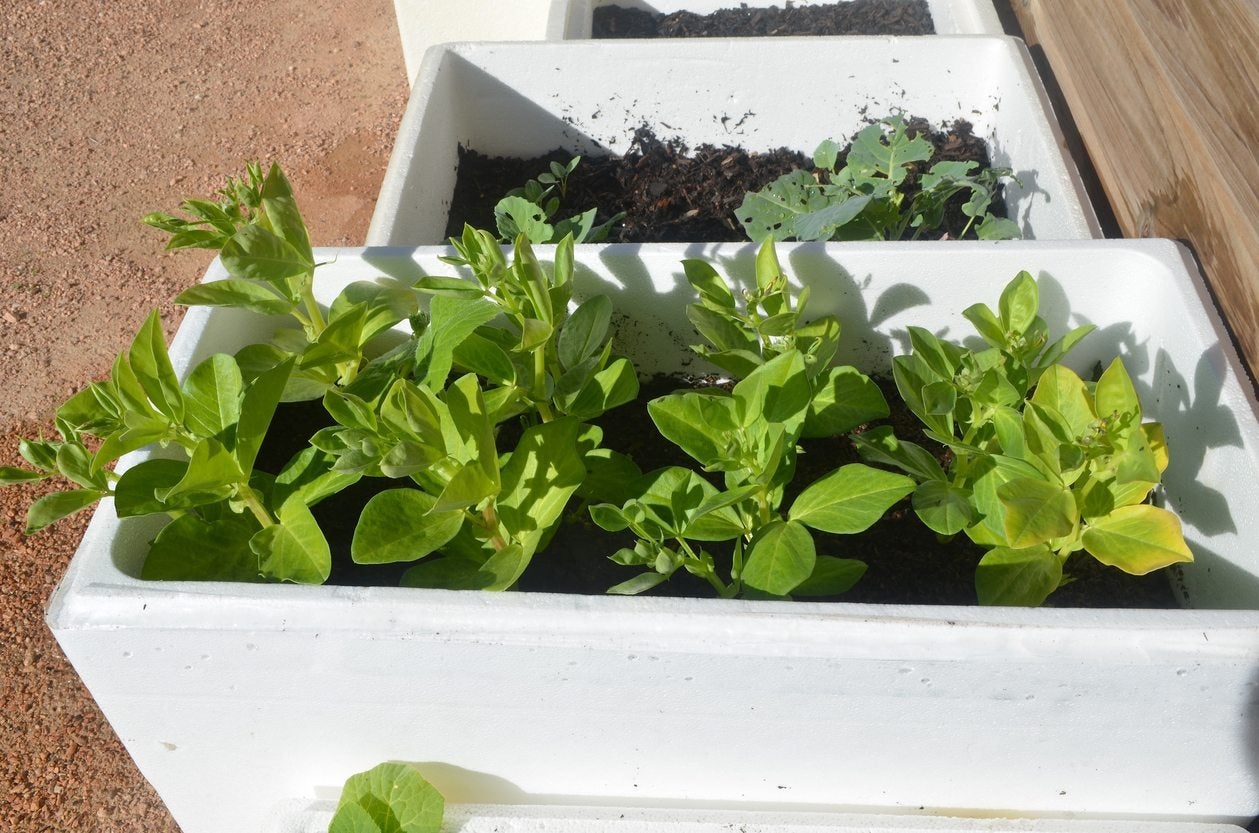Planting In Styrofoam Containers – How To Make A Recycled Foam Planter


Have you ever considered planting in Styrofoam containers? Foam plant containers are lightweight and easy to move if your plants need to cool off in afternoon shade. In chilly weather, foam plant containers provide extra insulation for the roots. Brand new Styrofoam containers are inexpensive, especially after the summer barbeque season. Better yet, you can often find recycled foam containers at fish markets, butcher shops, hospitals, pharmacies or dental offices. Recycling keeps the containers out of the landfills, where they last almost forever.
Can You Grow Plants in Foam Boxes?
Growing plants in foam containers is easy, and the bigger the container, the more you can plant. A small container is ideal for plants like lettuce or radishes. A five-gallon container will work for patio tomatoes, but you’ll need a 10-gallon (38 L) foam plant container for full-size tomatoes. Of course, you can also plant flowers or herbs. If you aren’t crazy about the looks of the container, a couple of trailing plants will camouflage the foam.
Growing Plants in Foam Containers
Poke a few holes in the bottom of the containers to provide drainage. Otherwise, plants will rot. Line the bottom of the container with a few inches of Styrofoam peanuts if you’re growing shallow-rooted plants like lettuce. A Styrofoam container holds more potting mix than many plants require. Fill the container to about an inch (2.5 cm.) from the top with commercial potting mix, along with a generous handful of either compost or well-rotted manure. Compost or manure can comprise up to 30 percent of the potting mix, but 10 percent is usually plenty. Elevate the container an inch or two (2.5 to 5 cm.) to facilitate drainage. Bricks work well for this. Place the container where your plants will receive the optimum level of sunlight. Place your plants carefully in the potting mix. Be sure they aren’t crowded; lack of air circulation can promote rot. (You can also plant seeds in Styrofoam containers.) Check the container daily. Plants in Styrofoam containers need plenty of water during hot weather, but don’t water to the point of sogginess. A layer of mulch keeps the potting mix moist and cool. Most plants benefit from a dilute solution of water-soluble fertilizer every two to three weeks.
Is Styrofoam Safe for Planting?
Styrene is listed as a carcinogenic substance by the National Institute of Health, but its risks are higher for those working around it as opposed to simply planting in a styrofoam cup or container. It also takes many years to break down, and it isn’t affected by soil or water. What about leaching? Many experts say the levels are not high enough to warrant any issues, and it takes high temperatures for this to occur at all. In other words, growing plants in recycled foam planters is, for the most part, considered safe. However, if you’re truly concerned about the possible effects from planting in styrofoam, it is advisable to avoid growing edibles and stick to ornamental plants instead. Once finished with your recycled foam planter, dispose of it carefully – never by burning, which can allow for potentially dangerous toxins to be emitted.
Sign up for the Gardening Know How newsletter today and receive a free copy of our e-book "How to Grow Delicious Tomatoes".

A Credentialed Garden Writer, Mary H. Dyer was with Gardening Know How in the very beginning, publishing articles as early as 2007.